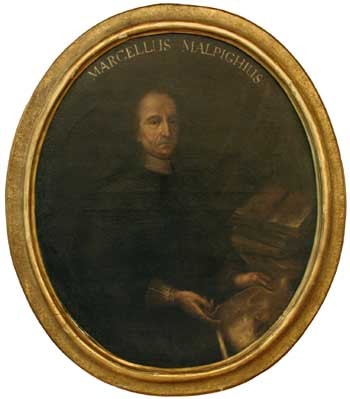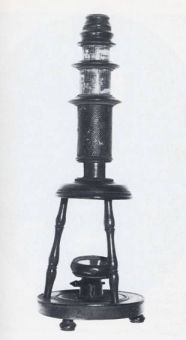Marcello
Malpighi
(Ariane
Dröscher)
|
Fig. 1: Portrait of Malpighi on the wall of the Rector's Study, Bologna University.
|
Marcello Malpighi was born in Crevalcore just outside Bologna on 10th March 1628. In January 1646 he enrolled at the Studium of Bologna but the young Malpighi does not seem to
have shown any particular vocation for studying. As the eldest son, Malpighi had to take care of his eight brothers and sisters so he decided to become a doctor. He was keen on anatomy and attended the "Anatomic Coro", an academy founded by Bartolomeo Massari which devoted itself to the dissection of animals and, when available, human corpses. During that period, however, the Studium of Bologna had entered a grey era and, despite an anatomic
tradition going back to Mondino de' Liuzzi, Andrea Vesalio and Giulio Cesare Aranzio, the ancient
authority of
Galen
was still a firm cornerstone of Bologna's medical school. |
|
Therefore, in 1656, two years after graduating in medicine and philosophy and one year after
the death of his teacher (and brother-in-law) Massari, Malpighi accepted the invitation from the
Archduke Leopold of Tuscany to teach in Pisa. |
|
|
|
(Marcello Malpighi - page 1 of 3)
| Forward > |


